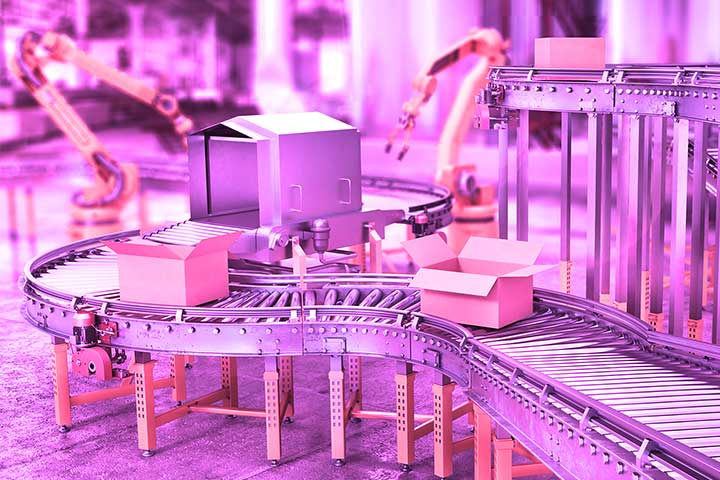In recent years, the automation of end-of-line packaging processes has ceased to be exclusive access for large sectors, such as distribution or the automotive industry, to become an economical and profitable alternative in most industries. The need to improve and streamline productivity in an increasingly competitive environment has also accelerated the integration of these automated systems.
At this time, the machinery dedicated to forming and closing boxes, wrapping, and strapping pallets become indispensable, providing enormous productivity, quality, and safety, with a concise return on investment in sectors such as food or non-durable consumer goods.
In this growth, innovative technologies such as Artificial Intelligence or machine learning have played an essential role in helping process machines such as wrapping, forming, or closing cardboard boxes to make smarter decisions and provide security. Extra to warehouse operators in sectors such as food and consumer goods.
The concept of automation has expanded in recent years, and today it means converting tasks that were performed manually into processes executed by machines with different levels of autonomy. A process that carries great advantages for most companies that rely on these systems to automate tasks such as those that integrate the end of the packaging line.
Also Read: Five Advantages Of Process Automation For Your Business
Automation: what are its advantages?
- Increased productivity: Among the benefits offered by automated packaging equipment stands out its ability to work at high speeds and, therefore, its impact on improving a company’s productivity. In addition, digitization associated with automation allows maintenance tasks to be scheduled before failures occur or the quality of the final product decreases, thus avoiding unscheduled production stops.
- It has increased job security: Automation and industrial control of packaging processes avoid the direct participation of human beings in activities that may threaten the physical integrity of operators and increase occupational safety. The deployment of sensor systems in devices such as autonomous vehicles or machinery that perform risky tasks favours the coexistence of human beings and machines in the plant. All this translates into greater control of both production and the quality of the final product.
- Increased efficiency: Efficiency is one of the keys to a company’s competitiveness, and for that reason, many efforts are devoted to achieving maximum efficiency in each of the packaging processes. Automation helps reduce downtime and improve efficiency and competitiveness.
- Decrease in production costs: The progressive implementation of the so-called Industry 4.0 has managed to standardise and lower the cost of machinery production and democratise its industrial deployment, especially in small and medium-sized companies. This, coupled with low maintenance costs, results in lower production costs and a more positive ROI.
- Increase in the quality of the process: The last great advantage of the automation of industrial packaging processes is the increase in the quality of the process. Critical sectors such as aeronautics manufacture most of their components in automated systems under the strictest precision, quality, and safety standards.
Packaging automation: 3 aspects to consider
Despite these advantages, before implementing any automation system, companies must analyse whether it is the most appropriate measure to increase their efficiency and profitability. Once the decision has been made, take into account three fundamental aspects.
- What process to automate: The company must identify which area related to packaging it wants to improve to define the objectives and involve the necessary people.
- Thoroughly analyse the starting point: The company must provide the firm in charge of automation with all the data on manual production, from the detail of the product to characteristics such as temperature and humidity in which the production takes place, to ensure correct implementation of the new solution.
- Choose the most suitable personnel: The people who will be in charge of managing the new automated line should be selected because, although some machines do not require previous experience, others need specific training to keep the system running and improve its future performance.
With the new solution already implemented, its availability and efficiency will depend on the degree of training of the assigned personnel and the maintenance tasks carried out by the machinery supplier. In the case of automated packaging solutions, these tasks must be complemented with general monitoring of the process in which every detail of the production is controlled.
Also Read: Six Advantages Of Digitizing The Documentary Process

